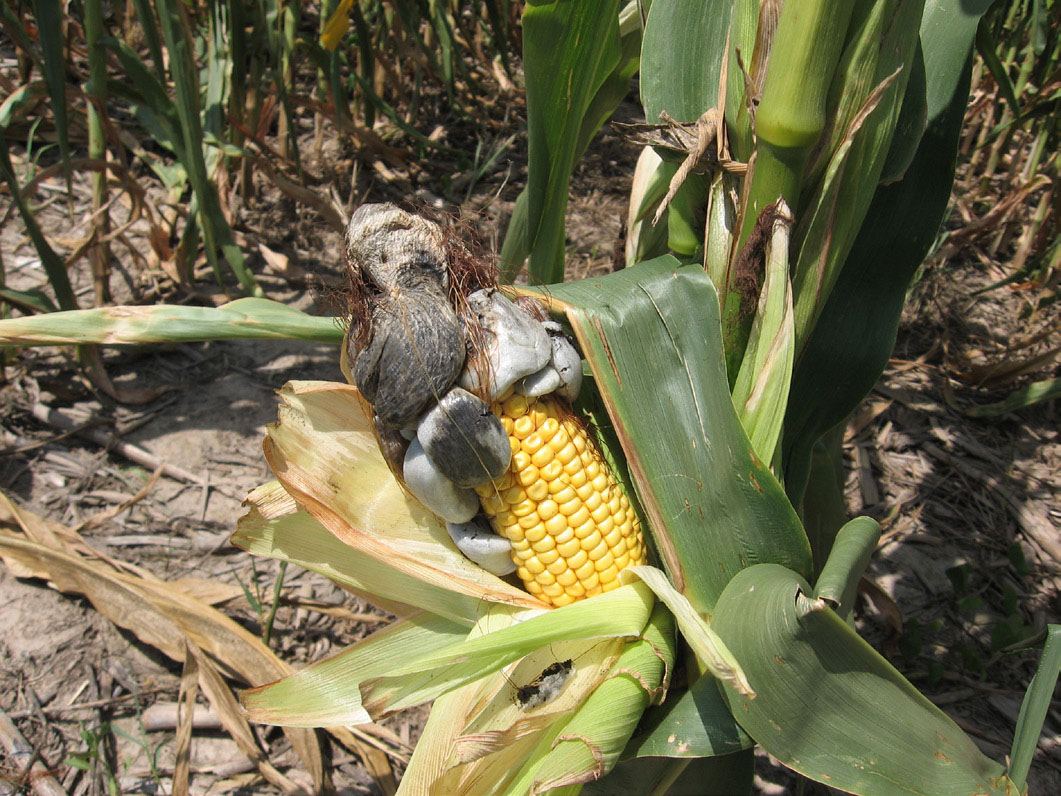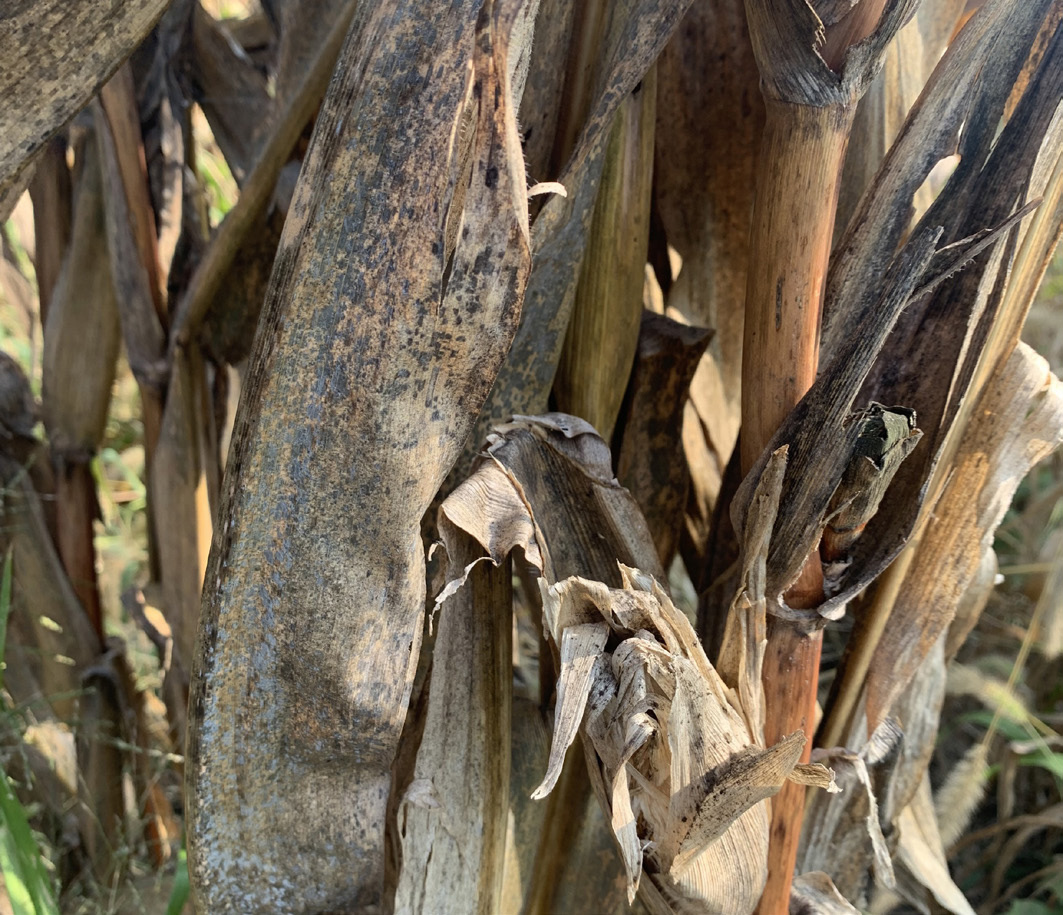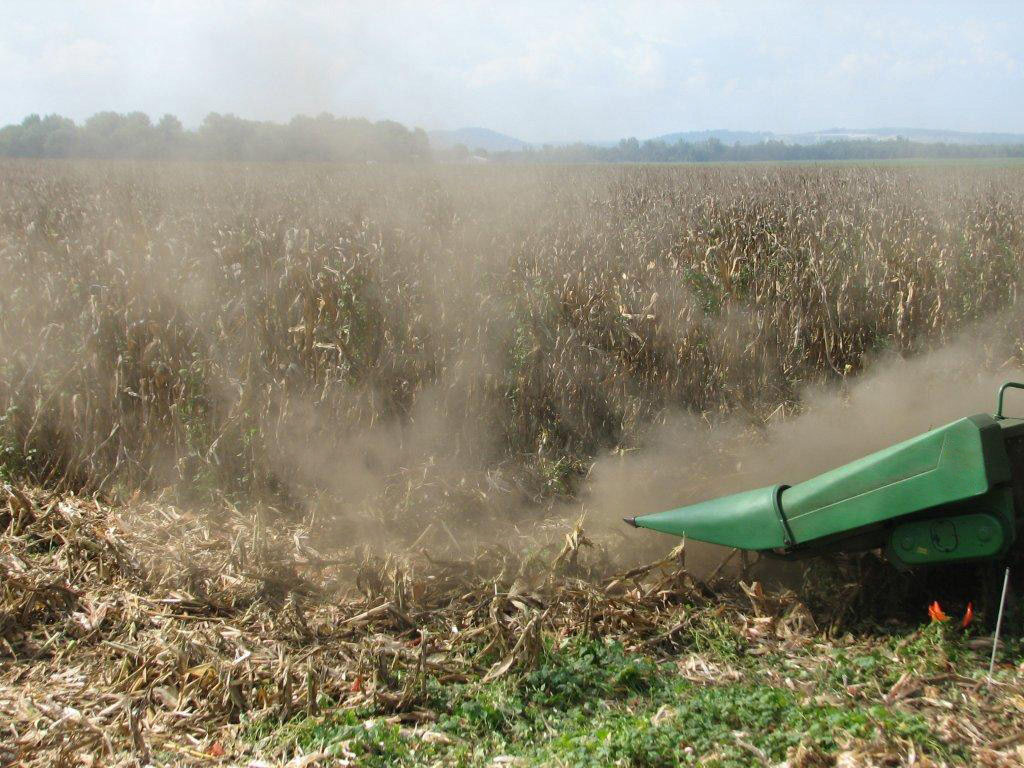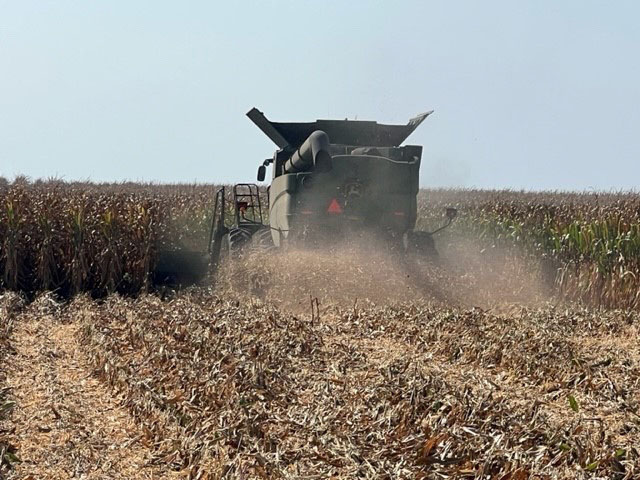While it may be very concerning to see a cloud of black dust following the combine when picking corn this year, this dust is not something that normally impacts the grain or grain quality. The black cloud is the caused by fungal spores that have formed on the dying leaves and husks. The main types of fungi causing this phenomenon are common smut (Figure 1) and several saprophytic, weak, parasitic fungi, such as Alternaria, Cladosporium, and Aureobasidium.
 Figure 1. Common smut on corn.
Figure 1. Common smut on corn.
Plants affected by these fungi have a sooty appearance, which usually occurs when the crop is mature and wet, such as when humid weather occurs. Stressed plants may be more prone to infection by these sooty molds.
 Figure 2. Saprophytic fungi on mature corn leaves.
Figure 2. Saprophytic fungi on mature corn leaves.
Occasionally, the sooty molds may infect the kernels, giving them a black appearance. If kernel infection is extensive, the grain should be thoroughly cleaned to remove light, damaged, and moldy kernels. Store the grain at 15% moisture content with proper air movement through the bin. Checking the grain on a regular basis is recommended.
 Figure 3. Dust surrounding the combine head because of saprophytic fungi on corn.
Figure 3. Dust surrounding the combine head because of saprophytic fungi on corn.
 Figure 4. Dust produced from harvesting corn with saprophytic fungi.
Figure 4. Dust produced from harvesting corn with saprophytic fungi.
Black dust caused by saprophytic fungi primarily annoys farmers harvesting corn and contributes to beautiful red sunsets while causing little impact on grain quality or yield. Combines may become covered with the sooty black dust, which may require additional maintenance checks. Combine operators should ensure that the engine filters are clean to prevent further issues such as overheating. While harvesting, it is recommended for anyone prone to respiratory issues to wear a dust mask as a precaution.
Legal Statements
US
ALWAYS READ AND FOLLOW PESTICIDE LABEL DIRECTIONS. Performance may vary, from location to location and from year to year, as local growing, soil and environmental conditions may vary. Growers should evaluate data from multiple locations and years whenever possible and should consider the impacts of these conditions on their growing environment.
The recommendations in this material are based upon trial observations and feedback received from a limited number of growers and growing environments. These recommendations should be considered as one reference point and should not be substituted for the professional opinion of agronomists, entomologists or other relevant experts evaluating specific conditions.
Bayer and Bayer Cross are registered trademarks of Bayer Group. All other trademarks are the property of their respective owners. ©2023 Bayer Group. All rights reserved. 1211_306951
CA
Performance may vary from location to location and from year to year, as local growing, soil and weather conditions may vary. Growers should evaluate data from multiple locations and years whenever possible and should consider the impacts of these conditions on the grower’s fields.
Bayer and Bayer Cross are registered trademarks of Bayer Group. Used under license. All other trademarks are the property of their respective owners. ©2023 Bayer Group. All rights reserved. 1211_306951
FR
La performance peut varier d'un endroit à l'autre et d'une année à l'autre, compte tenu des variations locales dans les conditions de croissance, de sol et de climat. Si possible, les producteurs devraient évaluer les résultats de plusieurs sites et années et devraient tenir compte des conséquences de ces conditions sur leurs champs.
Bayer et La Croix Bayer sont des marques depose’ de Bayer Group. Utilisation sous licence. Toutes les autres marques de commerce appartiennent à leur titulaire respectif. ©2023 Groupe Bayer. Tous droits réservés. 1211_306951